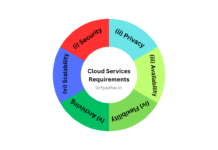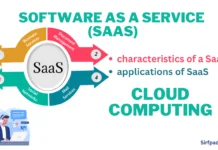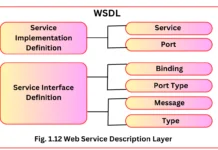What is IaaS PaaS SaaS in Cloud Computing
Infrastructure as a Service (IaaS)
The infrastructure service layer was based on virtualization technology and provides the basic computing infrastructure of servers, processing, storage, networks, and other fundamental computing resources where the consumer is able to deploy and run arbitrary software, which can include operating systems and applications. The consumer does not manage or control the underlying cloud infrastructure but has control over operating systems, storage, deployed applications, and possibly limited control of select networking components.
The main purpose of IaaS is to avoid purchasing, housing, and managing the basic hardware and software infrastructure components, and instead obtain those resources as virtualized objects controllable via a service interface (which reduces hardware costs).
Customers are allocated computing resources in order to run virtual machines consisting of operating systems and applications.
Platform as a Service (PaaS)
Platform as a service adds a higher level to the cloud infrastructure by providing a platform upon which applications can be written or deployed. These service providers offer, in this layer, application programming interfaces (APIs) that enable developers to exploit functionality over the Internet rather than delivering complete applications. It delivers development environments to programmers, analysts, and software engineers as a service. PaaS gives end users control over application design but does not give them control over the physical infrastructure. In this service, customers may interact with the software to enter and receive data, perform actions, get results and to the degree that the vendor allows it to customize the platform involved.
The main purpose of PaaS is to reduce the cost and complexity of buying, housing, and managing the underlying hardware and software components of the platform, including any needed program and database development tools. PaaS gives end users control over application design but does not give them control over the physical infrastructure.
Software as a Service (SaaS)
Software as a service provides the consumer with typical software applications that run over the cloud computing infrastructure. SaaS delivers applications through a web browser to thousands of customers rather than installed on their computers. The end user does not exercise any control over the design of the application, servers, networking, and storage infrastructure.
The main purpose of SaaS is to reduce the total cost of hardware and software development, maintenance, and operations. All these services offer scalability and multi-tenancy. In addition, they are self-provisioning and can deployed through public cloud deployment modules. Examples of these three modes of cloud computing are given in Table 1.3.
Examples-
Amazon’s elastic compute cloud (EC2) is a prominent example of a laaS offer. It offers the user a virtual server, with the CPU, memory, storage, operating system, and hypervisor or system monitoring software included.
(a) Google App Engine –
Is an example of a Web platform as a service (PaaS) which enables to deploy and dynamically scale Python and Java based Web applications.
(b) Google Apps –
Provides Web-based office tools such as e-mail, calendar, and document management.
(c) Rackspace Cloud –
Is a cloud IaaS. It provides users with access to dynamically scalable computing and storage resources, as well as third-party cloud applications and tools.
(d) Salesforce.com –
Is a cloud SaaS. It provides a full customer relationship management (CRM) application.
(e) Zoho.com –
Is a cloud SaaS. It provides a large suite of Web-based applications and it is used often by organizations.
| Attributes | SaaS | PaaS | IaaS |
| Service Providers | Google apps, Office Live, G-mail, Facebook | Azure, Netsuite, Amazon web Services | IBM, Amazon EC2, Xen SalesForce.com |
| Runtime Management | By The Customers | By The Vendor | By The Vendor |
| Data Management | By The Customers | By The Developer | By The Vendor |
| Application Management | By The Customers | By The Developer | By The Vendor |
| Used By | Business users | Developers And Deployers | System Manager |
| Visibility | End Users | Application Developers | Network Architects |
| Type of Services | Dynamic infra-structure Service | Integration As a Service | Dynamic Application Services |
| No to Providers | Large numbers of application in the cloud | Few Cloud Platforms | Elite Group of Providers |
| Server Management | By the vendor | By The Vendor | Small |
List the Advantages and disadvantages of the services on the cloud computing.
Advantages of IaaS-
- Quick addition of Capacity – elastic to grow and shrink as capacity requirements change.
- Most hardware, network, and data center infrastructure costs, are eliminated.
- Lower labor costs are network infrastructure costs, data center costs are ongoing facility maintenance costs are omitted.
- High availability of internet connections from the hosting provider.
- Allows existing applications to be moved into the cloud with a minimum of modification.
Disadvantages of IaaS-
- Perceived loss of control of assets and physical security.
- Network outages (local connection to the internet or the internet itself) mean complete service loss.
- More internet bandwidth is required from facilities.
- possible loss of logical security, and concerns about information leakage from one customer to another.
Advantages of PaaS-
- Quick addition of capacity – elastic to grow and shrink as capacity requirements change.
- Hardware, network, and data center infrastructure costs are eliminated.
- Some software costs (OS and support software) are eliminated.
- Initial pre-configuration of core-OS and some support software is eliminated.
- High availability of Internet connections from the hosting provider.
Disadvantages of PaaS-
- Less application flexibility as applications must conform to a pre-defined platform template.
- Only certain types of applications are suited for this model, depending on specifies of platform.
- Less portability of existing applications as constrained to a single pre-defined platform configuration.
- Same security/auditing/network bandwidth and dependency concerns as with laaS.
- Provider “lock-in”, portability of applications between providers may prove difficult.
Advantages of SaaS-
- Easy and quick setup, often by non-technical people and on demand.
- Easy and quick tear down, on-demand when the need for the application subsides.
- No long-term contracts means can be used for short-term bursting.
- Low per-user cost.
- Low client requirements.
Disadvantages of SaaS-
- May run slower when the Internet is heavily loaded.
- Often “one size fits all” customization/flexibility are limited.
- Provider “lock in” is very likely, difficult or impossible to switch vendors.
- Security is a concern, data leakage for example.
- Ability to audit and traceability are concerns.








